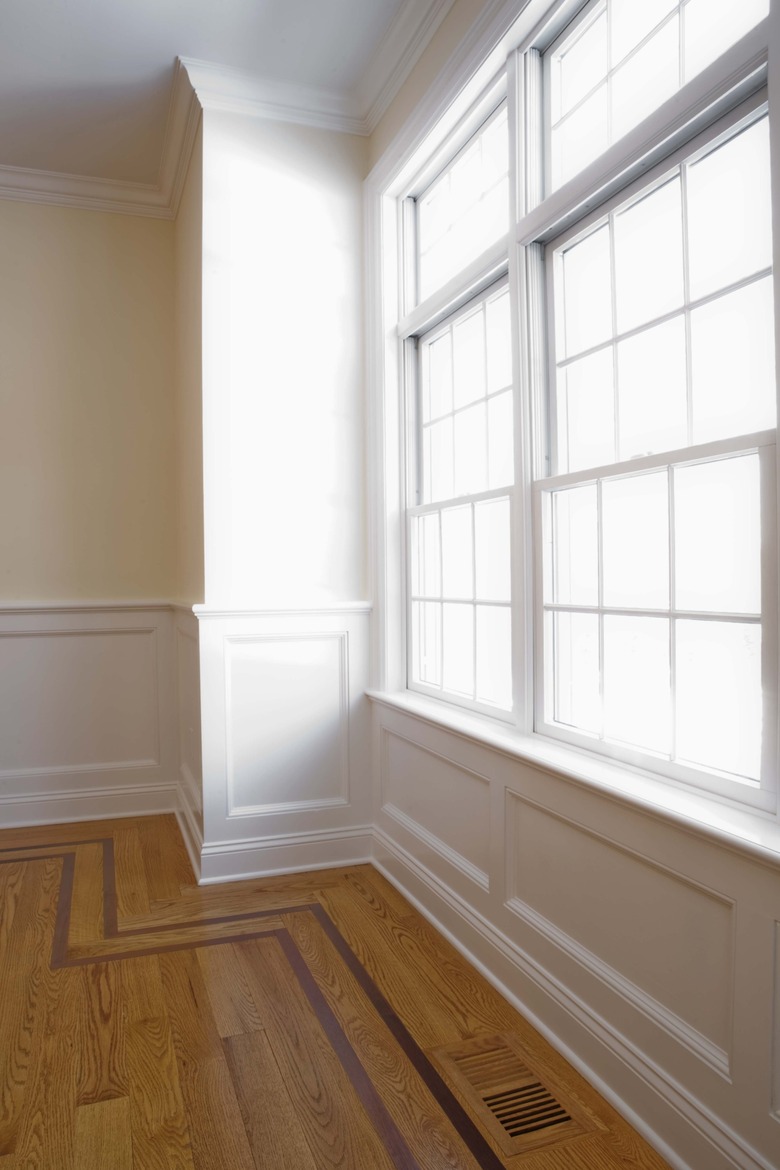How Much Sound Reduction Does Tempered Glass Have?
When choosing windows for your home or vehicle, you must decide the type of glass you want. Common types of of glass include annealed, laminated and tempered. Each type has a specific purpose, and understanding the purpose can help you make informed decisions. A standard pane of tempered glass, for instance, offers little noise reduction. However, some types of a tempered glass windows may provide some sound insulation.
Tempered Glass
Tempered Glass
Manufacturers create tempered glass by rapidly heating annealed, or standard pane, glass to temperatures as high as 1150 degrees Fahrenheit and rapidly cooling it. This process causes the glass to rapidly expand and contract, creating a compressed surface. The compression of the material makes tempered glass very strong and suited for applications that require impact resistance. Furthermore, when tempered glass breaks, it shatters in countless miniscule pieces with blunt edges, virtually eliminating the danger of laceration that arises when other forms of glass shatter.
Sound Reduction
Sound Reduction
Because manufacturers design tempered glass specifically for strength, little information on its sound-reducing abilities exist. According to a paper presented at the 2002 International Congress and Exposition of Noise Control Engineering, tempered glass in applications such as car windows exhibits noise reduction problems and, in some cases, even facilitates noise transmission at certain frequencies. Furthermore, a chart published in the book "The Automotive Body: Volume I: Components Design" shows that tempered glass exhibits little to no sound reduction higher than 40 decibels — about 20 decibels less than the level of ordinary conversation.
Sound-Reducing Glass
Sound-Reducing Glass
Manufacturers typically use laminated glass in applications designed specifically for sound reduction. Laminated glass consists of two panes of glass fused with heat to form a single pane, with a layer of a clear plastic material such as polyvinyl butyral, or PVB, placed between them. The composition of laminated glass dampens noise transmission through windows and can also prevent the penetration of ultraviolet light. In addition to providing sound reduction, laminated glass is difficult to break through because the PVB layer exhibits a high degree of flexibility. Even if the glass shatters, the PVB retains its shape and holds shards of broken glass in place.
Tempered Glass Windows
Tempered Glass Windows
Tempered glass as a raw material offers little to no sound reduction, though tempered glass windows may offer some sound reduction. For instance, a double glazed window consists of two panes of glass separated by a gap filled with air or another gas. The gas in this gap may provide sound reduction as it passes from the outer pane of glass to the inner pane. Alternatively, you can purchase a double glazed window with one pane of tempered glass and one pane of laminated glass, providing both sound protection and durability.
